
Lucasfilm Games is an American video game licensor and a subsidiary of Lucasfilm. It was founded in May 1982 by George Lucas as a video game development group alongside his film company; as part of a larger 1990 reorganization of the Lucasfilm divisions, the video game development division was grouped and rebranded as part of LucasArts. LucasArts became known for its line of adventure games based on its SCUMM engine in the 1990s, including Maniac Mansion, the Monkey Island series, and several Indiana Jones titles. A number of influential game developers were alumni of LucasArts from this period, including Brian Moriarty, Tim Schafer, Ron Gilbert, and Dave Grossman. Later, as Lucasfilm regained control over its licensing over the Star Wars franchise, LucasArts produced numerous action-based Star Wars titles in the late 1990s and early 2000s, while dropping adventure game development due to waning interest in the genre.
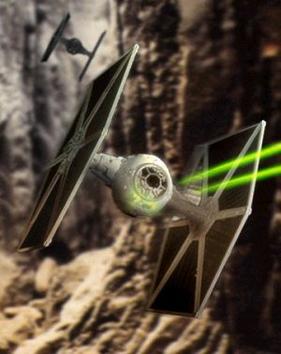
The TIE fighter or Twin Ion Engine fighter is a series of fictional starfighters featured in the Star Wars universe. TIE fighters are depicted as fast, agile, yet fragile starfighters produced by Sienar Fleet Systems for the Galactic Empire and by Sienar-Jaemus Fleet Systems for the First Order and the Sith Eternal. TIE fighters and other TIE craft appear in Star Wars films, television shows, and throughout the Star Wars expanded universe. Several TIE fighter replicas and toys, as well as a TIE flight simulator, have been produced and sold by many companies.

The X-wing starfighter is a name applied to a family of fictional spacecraft manufactured by the Incom Corporation and later the Incom-FreiTek Corporation from the Star Wars franchise. Named for the distinctive shape made when its s-foils (wings) are in attack position, the X-wing was a class of starfighter used by the Rebel Alliance in their conflict with the Galactic Empire. It made its theatrical debut, as the T-65B model, in Star Wars (1977) as the spacecraft piloted by Luke Skywalker and the Red Squadron when Luke destroyed the Death Star. The starfighter featured extensively in the Star Wars original trilogy and in the Expanded Universe that followed, and has been merchandised as a variety of toys and models.
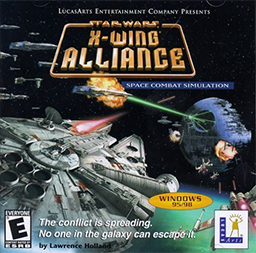
Star Wars: X-Wing Alliance is a space simulation video game, the sequel to both Star Wars: TIE Fighter and Star Wars: X-Wing vs. TIE Fighter. X-Wing Alliance presents the story of the Azzameen family, a family of space traders. The player assumes the role of Ace Azzameen, the youngest of the Azzameen children, juggling military duty as a fighter pilot for the Rebel Alliance, and allegiance to his family, flying larger heavily armed freighters for the family business, amid a bloody family feud and in the larger context of a galactic civil war. It received favorable reviews.

Star Wars: X-Wing vs. TIE Fighter is a 1997 space combat game developed by Totally Games for LucasArts. It is the third installment of the X-Wing series.
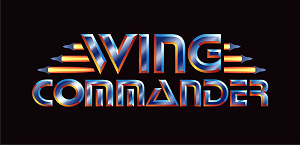
Wing Commander is a media franchise consisting of space combat simulation video games from Origin Systems, Inc., an animated television series, a feature film, a collectible card game, a series of novels, and action figures. The franchise originated in 1990 with the release of video game Wing Commander.

Star Wars: Dark Forces is a first-person shooter video game developed and published by LucasArts. It was released in 1995 for MS-DOS and Macintosh, and in 1996 for the PlayStation. The story is set in the fictional Star Wars expanded universe and begins shortly before the original Star Wars film, before flashing forward to a year after the film's events. The game's protagonist and playable character is Kyle Katarn, a mercenary working on behalf of the Rebel Alliance who discovers the Galactic Empire's secret Dark Trooper Project, which involves the development of a series of powerful new battle droids and power-armored stormtroopers.

Star Wars: Empire at War is a 2006 real-time strategy video game developed by Petroglyph Games and published by LucasArts for Microsoft Windows and Mac OS X. Set between Episode III and Episode IV, it focuses on the fledgling struggle between the Empire and the Rebels. It uses Petroglyph's game engine Alamo. In October 2006, an expansion titled Star Wars: Empire at War: Forces of Corruption was released. On May 31, 2014, online functionality, including network multiplayer and wireless chat, was discontinued after Glu Mobile's purchase of GameSpy and the subsequent shutdown of all game servers. As of September 1, 2017, the multiplayer has been re-enabled on the Steam version with Workshop support added.
Star Wars: Rogue Squadron is a series of Star Wars action video games jointly developed by LucasArts and Factor 5 and published by LucasArts for Nintendo consoles. Aspyr has expressed interest in bringing the series to the Nintendo Switch.

Star Wars Rogue Squadron II: Rogue Leader is a flight action game co-developed by Factor 5 and LucasArts and is the second of the Rogue Squadron series. It was published by LucasArts and released as a launch title for the GameCube in North America on November 18, 2001, Europe on May 3, 2002, and Australia on May 17, 2002. Set in the fictional Star Wars galaxy, the game spans all three original trilogy Star Wars films. The player controls either Luke Skywalker or Wedge Antilles. As the game progresses, Skywalker, Antilles and the Rebel Alliance fight the Galactic Empire in ten missions across various planets.

Over one hundred video games based on the Star Wars franchise have been released, dating back to some of the earliest home consoles. Some are based directly on films while others rely heavily on the Star Wars Expanded Universe.

Star Wars: Rebel Assault is a 1993 rail shooter video game developed and published by LucasArts for DOS, Macintosh, Sega CD and 3DO Interactive Multiplayer systems, set in the Star Wars universe. It is the first CD-ROM-only game to be published by LucasArts. The game's story focuses on a young pilot called Rookie One as they are trained by, and subsequently fights for, the Rebel Alliance in the Galactic Civil War.

Star Wars: Rebel Assault II: The Hidden Empire is a 1995 video game developed by LucasArts. It is the sequel to Star Wars: Rebel Assault, set in the Star Wars expanded universe. It is played as a rail shooter; the player proceeds down predetermined paths, but has the ability to control aiming, shooting, and dodging. The player character, Rookie One, pilots ships such as a YT-1300 Corellian Transport, a B-wing, and a Y-wing, and encounters new enemy ships, including TIE Interceptors. They uncover, and eventually disable production of, a new TIE variant known as the TIE Phantom, which has the ability to cloak.
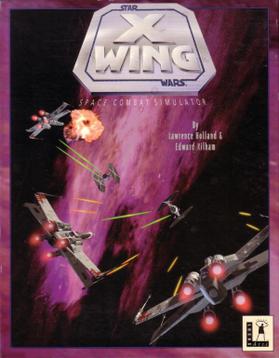
Star Wars: X-Wing is a space simulation video game, the first of the X-Wing combat flight simulation games series. The player's character flies starfighters, including the X-wing, for the Rebel Alliance. The narrative precedes and parallels the events of Star Wars Episode IV: A New Hope.

Star Wars Rogue Squadron III: Rebel Strike is an action video game developed by Factor 5 and published by LucasArts for the GameCube. The game is set during the original Star Wars trilogy and recreates battles that take place during those films. The game follows Rogue Squadron, which, under the command of Luke Skywalker and Wedge Antilles, uses starfighters to engage and defeat the Galactic Empire.
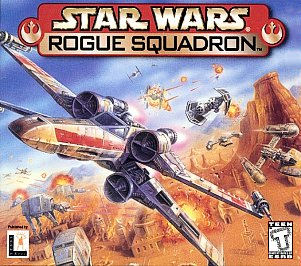
Star Wars: Rogue Squadron is an arcade-style flight action game co-developed by Factor 5 and LucasArts. The first of three games in the Rogue Squadron series, it was published by LucasArts and Nintendo and released for Microsoft Windows and Nintendo 64 in December 1998. The game's story was influenced by the Star Wars: X-wing – Rogue Squadron comics and is set in the fictional Star Wars galaxy, taking place primarily between events in the films Star Wars and The Empire Strikes Back. The player controls Luke Skywalker, commander of the elite X-wing pilots known as Rogue Squadron. As the game progresses, Skywalker and Rogue Squadron fight the Galactic Empire in 16 missions across various planets.

Star Wars: TIE Fighter is a 1994 Star Wars space flight simulator and space combat video game, a sequel in the Star Wars: X-Wing series. It places the player in the role of an Imperial starfighter pilot during events that occur between The Empire Strikes Back and Return of the Jedi.

Star Wars: X-Wing is a miniature war game designed by Jay Little and produced by Fantasy Flight Games that was released at Gen Con during August 17, 2012. It features tactical ship-to-ship dogfighting between various types of starfighters set in the fictional Star Wars universe. The game is said to be easy to learn and quick to play taking anywhere between 15 and 60 minutes from first set-up to battle's end. Each round both players give all their ships movement orders without knowing what their opponent is doing before resolving these orders while trying to shoot down enemy craft. On May 1, 2018, FFG announced X-Wing Second Edition, to be released on September 13, 2018. Although the physical models are transferable, an entire new set of rules, templates, and markers have been produced and are available through a new core set, waves, and conversion packs.
Star Wars: X-Wing Second Edition is the second edition of the miniature war game designed by Jay Little and produced by Fantasy Flight Games that was first announced on May 1, 2018, with the first release on September 13 of the same year. On November 16, 2020, Atomic Mass Games announced that it would be responsible for X-wing and its two sister games, Legion and Armada.

















